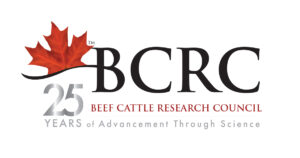A Quarter-Century of Progress with Extended Grazing
This is the first in a four-part series celebrating 25 years of industry investment into Canadian beef industry research and extension.
Putting cattle on extended grazing systems has paid off handsomely for Canadian ranchers over the past quarter-century – mostly by drastically reducing feeding costs, but also in helping the environment.
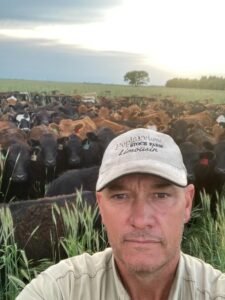
“Any time you can graze a blade of grass that you didn’t have to cut, bale, harvest or store, it’s cheaper,” says Trevor Atchison. “Things have been bad enough in the cow-calf sector lately – without what we’ve been implementing over the years, things would be a lot tougher for us having to spend on expensive fuel and equipment.”
Atchison’s Poplarview Stock Farm calves 750 cows a year, backgrounds the calves over the winter and runs the heifers on grass. When conditions are right, he buys in 250 to 350 feeders, usually heifers. Atchison owns 5,500 acres of land with 3,000 in pasture and rents 8,000 acres with half in pasture. The ranch is in southwest Manitoba, east of Pipestone, and has been in the family for 120 years.
Atchison started taking over the reins of the business a couple of years after graduating high school in 1993 when his dad got busy with several different boards. Since then, he’s been diligent in keeping up with developments through seminars, trade shows and other learning opportunities.
Extended grazing means keeping cattle out of pens and corrals as long as possible. Methods include swath grazing, in which grain crops like oats, barley or triticale are swathed in the green stage and left in the field for the cattle. In bale grazing, bales of hay are placed in the pasture or hayfield instead of feeding in barns or yards. Bales are rationed to the cows by using electric fencing and wastage can be reduced by moving the fences every two to five days. Stockpiled perennial forages and crop residues can also be used in extended grazing systems.
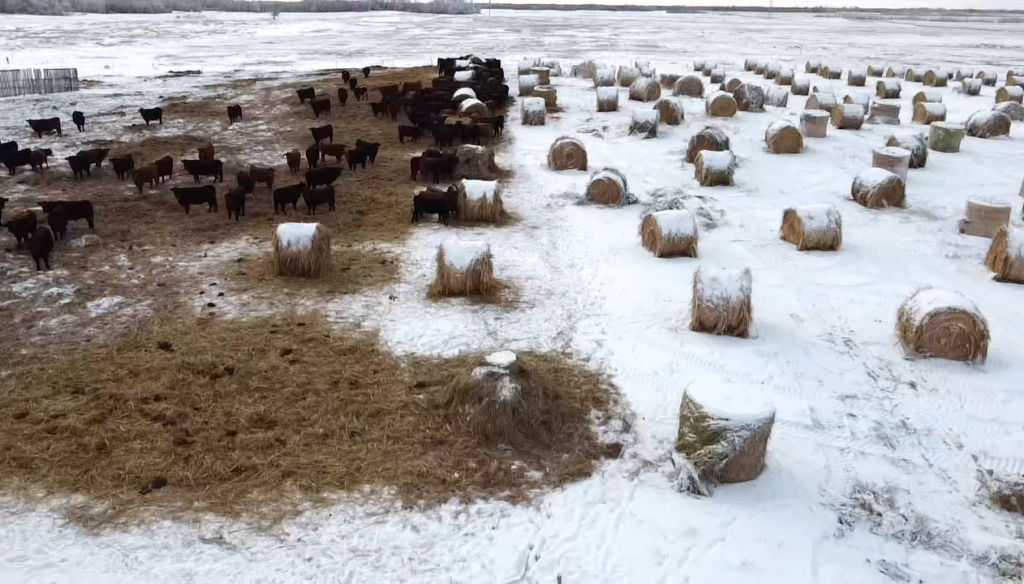
The economic advantages over conventional drylot systems are many, including reduced costs for labour, equipment and transportation, planting, harvest and storage, buildings and managing manure. The manure aspect is actually an environmental boon in extended grazing systems because it naturally restores nutrients back to the soil.
Drawbacks can include access to water, variable winter weather and snow that prevent the cattle from getting to the feed, shelter requirements, needing a backup for when feed is not available and wildlife damage to the feed.
Statistics Canada’s 2021 agricultural census had 30,302 Canadian farms using in-field winter grazing or feeding. That’s 41 per cent of all farms reporting cattle, up from 35.4 per cent in the 2016 census.
More Canadian producers are using extended grazing because they have seen how well it works in real time and because of the 25 years of research that has demonstrated how this practice is practical, economical and environmentally responsible.

Crunching the numbers
“By far the biggest cost to producers is winter feeding, especially in cow-calf production,” says Kathy Larson, professional research associate at the University of Saskatchewan, who is also involved with the Canadian Cow-Calf Cost of Production Network.
In a study conducted by the Western Beef Development Centre between 2001 and 2012, winter feeding accounted for 27 to 34 per cent of overall costs, which included labour, veterinary and medicine, transportation and a number of other inputs.
“Extended grazing is beneficial to the animal and to the pocketbook,” she says, adding that swath grazing is one of the lowest-cost feeding methods to over-winter cows yet it’s not the most common method used by producers.
The economic advantages of extended grazing have been researched and well-documented for decades. A study published in 1993 showed that stockpiled grazing fescue was 52 per cent cheaper than alfalfa cubes and silage in drylot. In 2004, Duane McCartney and his research team at Lacombe (see below) found that swath grazing was $70 per cow cheaper over 100 days than drylot and used 38 per cent less labour. And environmentally, a 1997 study showed that pasture growth doubled after just one year of bale grazing.
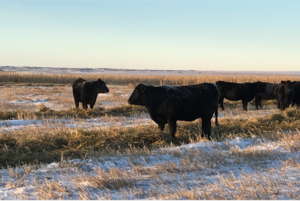
Larson had just launched a survey in January 2023 to update knowledge on how producers use swath grazing as well as why some producers prefer not to swath graze or have even stopped using the method.
Extended grazing in Canada has been used by some producers for decades and research has continued to show its worth.
History

In 1996, researcher Duane McCartney moved to Lacombe, Alberta, when the beef research program in which he had been working for more than 20 years at Melfort, Saskatchewan, was closed by the federal government.
There, during the late 1970s and early 1980s, he and the research team had good success with crested wheatgrass – normally grown much farther south than Melfort – for early spring and late fall grazing. In summer, the cattle would be turned out on brome-alfalfa pastures.
“The longer we could keep them (the cattle) grazing, the better off everybody was,” he says.
They then moved on to Italian rye grass, which would be underseeded to oats or barley which would be cut and used for silage. The rye grass would then grow and be used for late fall grazing.
“We could graze cattle right up to and into snow,” he says, adding that during the late ‘80s and early ‘90s, he heard about swath grazing being used by producers in Alberta.
At Melfort, they successfully used swath grazing with oats and barley for a number of years.
In the late 1990s, the Western Forage Beef Group was formed at Lacombe with extension people from the province and federal research scientists. Funding from the Canada-Alberta Beef Development Fund enabled the researchers to undertake a large research program on swath grazing.
“The people at Lacombe have been swath grazing ever since,” he says.
While barley and oats are the most common grains for swath grazing, there has been good success with triticale and corn, as well.
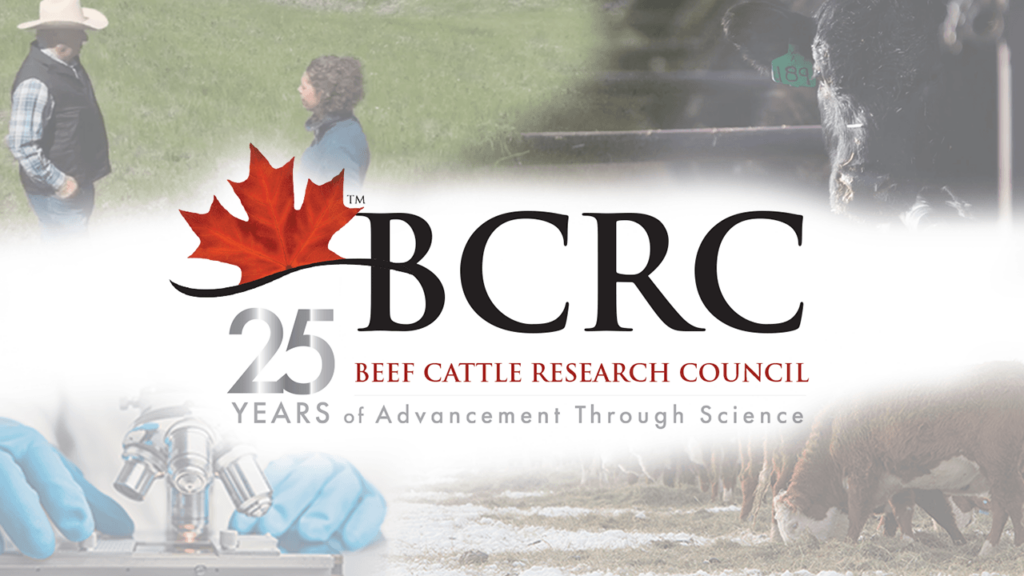
Back at Poplarview
Thirty years ago, calves at Poplarview were born in March and weaned in October. Calves were marketed immediately and heifers were kept as well as some bulls. Cows would go back out grazing after weaning. In those days, most ranchers brought their animals in and started feeding after weaning.
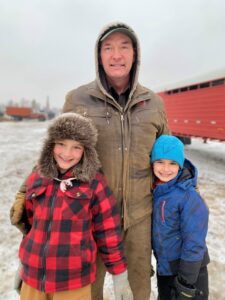
“As long as the tractor could get around the pasture, we left them out,” Atchison says.
When Trevor took over, rotational grazing was being heavily promoted and there was lots of information available.
“In the late ‘80s and early ‘90s, there was a big transition from grain land back to grass,” he says, which prompted a lot of experimentation in grazing. “I spent a lot of time travelling, gathering information, talking to people and trying to get it right,” he says.
Today, Atchison’s cattle stay out on pasture for the entire year, except for when they are brought in for processing, including pregnancy checks, body condition scoring and vaccinations.
Based on the body condition score and the age of the animal, he splits the herd into two groups – the ones that need extra nutrition and the ones that are doing fine. He uses a combination of swath and bale grazing and, in the past five years, started feeding silage. Calving now starts in May.
The cattle are moved every other day in rotational grazing, which provides an opportunity to do health checks. Water sources include snow, aquifer fed dugouts, wells and troughs, and more than 12 miles of pipes. To prevent freezing, he allows water to trickle out of the pipes all the time.
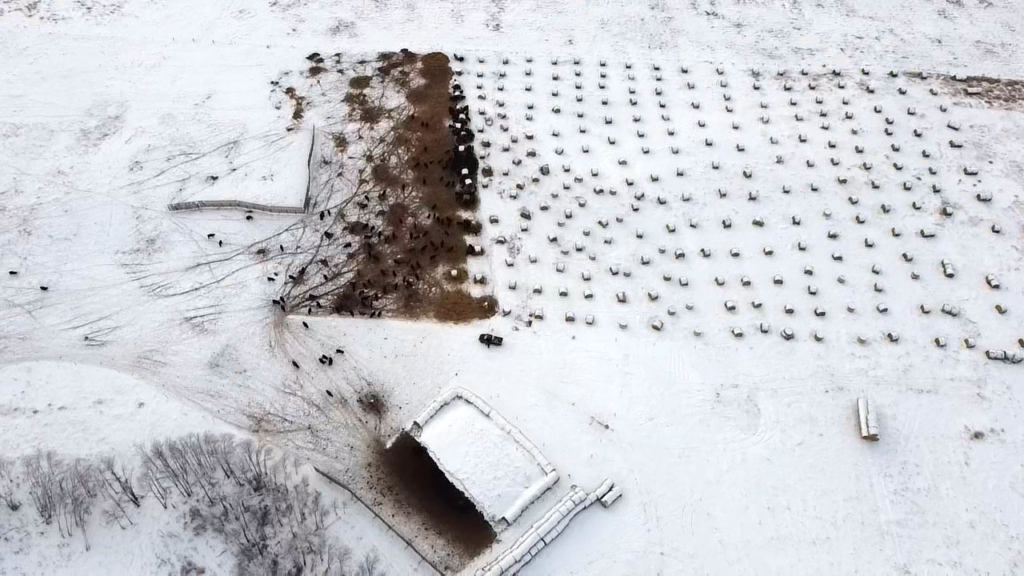
For more information and production advice, visit the BCRC’s extended grazing webpage.
Click here to subscribe to the BCRC Blog and receive email notifications when new content is posted.
The sharing or reprinting of BCRC Blog articles is welcome and encouraged. Please provide acknowledgement to the Beef Cattle Research Council, list the website address, www.BeefResearch.ca, and let us know you chose to share the article by emailing us at info@beefresearch.ca.
We welcome your questions, comments and suggestions. Contact us directly or generate public discussion by posting your thoughts below.
